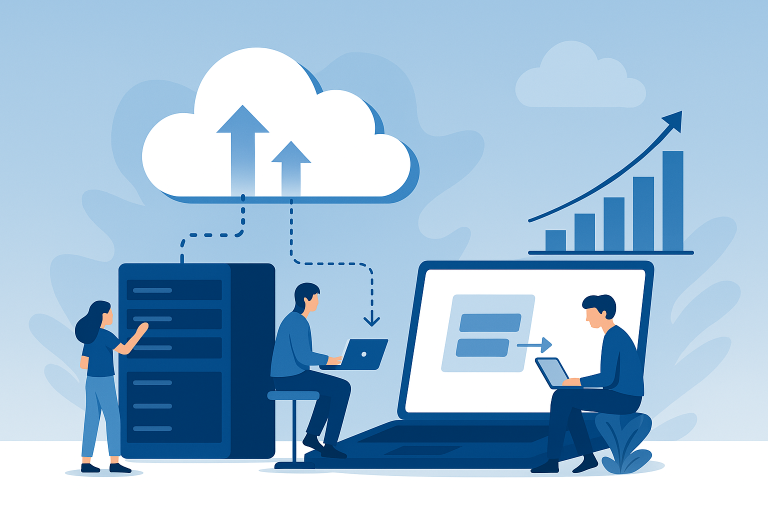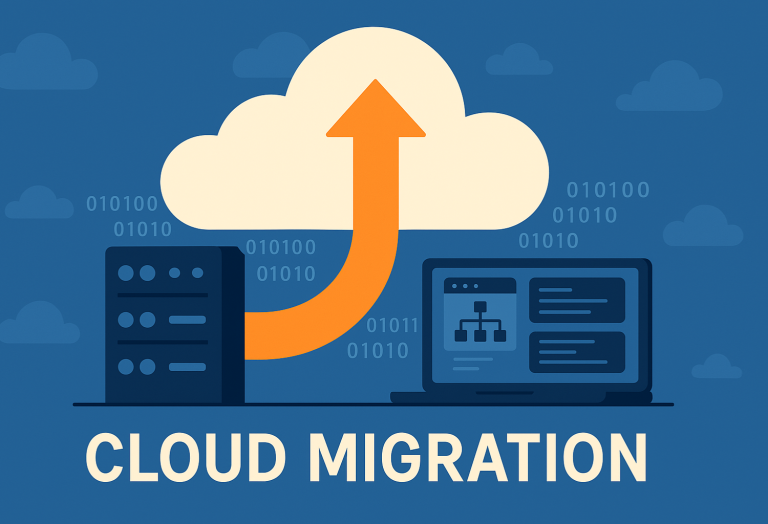
In today’s world, when customers expect 24/7 services and organizations need the “always-on” nature of businesses to operate with a mobile workforce and serve globally, —100% uptime has become essential. If the IT systems go down, both productivity and customer service suffers. Several businesses that rely on technology to function come to a screeching halt—the cost of downtime is more severe for them.
According to Carbonite, if the IT system of a small or medium-sized business (SMB) goes down for just 1 hour, that could cost about$25,620, or$427.00 per minute.
There are multiple reasons that may lead to expensive downtime. Some prevalent causes are – hardware and software misconfigurations, equipment failure, human error, adverse environmental conditions, power outages, and cyber-attacks. About 75 – 80% of downtimes are directly caused by people or process failures. And most importantly, many of the downtimes could be stopped before impacting a business or even occurring by Managed IT services. Investing in managed IT services to monitor and maintain your IT infrastructure can significantly reduce the risk of outages, unhappy customers, and missed sales opportunities.
How managed services can effectively control and even prevent costly downtime
Remote Monitoring
Managed service providers (MSP)offer efficient infrastructure monitoring as a remote monitoring solution. Remote infrastructure monitoring is a continuous process of tracking vital systems and actions of your IT infrastructure to make sure that the systems function optimally and all business-critical processes are on track. Simultaneously, continuous monitoring solution allows early detection of potential problems, which minimizes the risk and cost of downtime. Infrastructure monitoring service also helps to identify security threats and takes preventive measures to improve the company’s data compliance and cyber-security. Here are the preventive measures conducted by managed services:
- PC maintenance: To keep your system always up, one of the vital requirements is maintaining your hardware and software. MSP provides hardware maintenance services to keep systems running smoothly and keep them from overheating, malfunction, or sudden collapse.
- Software and Security Updates: Software makers are coming out with security patches from time to time to keep up the software protected from the latest hacking techniques. Now, it is tedious to check every system manually to make sure that all your software or web applications are up to date or not. With an MSP, you’ll never have to worry about software and security updates—your managed service partner will be responsible for keeping your system always up-to-date.
- Anti-Virus and Malware Monitoring: Currently, multiple threats are active to penetrate your system and corrupt. Even cybercriminals use ransomware that is used to completely lock you out of your files until you pay their demanded ransom. So, cybersecurity has become much more important and complicated than past. MSP is the right solution for anti-virus and malware monitoring and protects you from suffering a malicious attack even while you’re sleeping.
- Automated Backup System: Data is crucial, and data protection has become mandatory for every business. Despite, local data backup facility, it is wise to consider the backup services of your MSP to keep your data safe in remote servers. So, you don’t have to worry about data loss due to user error, lost or collapsed computers, or natural disasters. Your MSP will ensure your data is safe, secure, and retrievable at any time.
- Instant Alerts: With a professional IT infrastructure monitoring system, you will always be well aware of any attempted infiltration to your system or suspicious phenomena that may lead to any damage to your system. Instant automated alerts facility of the infrastructure monitoring system will let you and your service provider know when something needs attention.
Risk Assessment
In today’s world, risk assessment is crucial—it offers businesses insight into the risk posture for critical assets and systems, policies, procedures, and controls. Systematic risk assessment also helps to evaluate and mitigate risks when sharing your business information with someone, especially with third-party vendors.
With efficient and effective risk assessment analysis, you can be aware of any potential threat before integrating new technologies in your IT infrastructure and be prepared to address emerging threats for better security.
Vulnerability Testing
Vulnerability testing is meant to identify shortcomings in your IT infrastructure—this is a proactive approach to keep your system away from downtime. With vulnerability testing methods, the weak points of your systems can promptly be discovered and addressed through mock hacking attacks and software scans. Though this testing method does not include a typical network-wide security assessment, instead, it focuses on the perimeters and loopholes that hackers may use to enter the systems without proper authorization.
Penetration Testing
Generally, penetration testing is a periodical event—it is used to enhance a Web Application Firewall (WAF). The test involves some simulated attempt to breach various application systems, like Application Protocol Interfaces (APIs), front-end/back-end servers, etc., to identify the vulnerabilities like malicious inputs susceptible to code injection attacks. Considering the test result, you and your MSP can work on your WAF security policies to improve them for better protection.
Endpoint Protection
Managed IT services offer efficient endpoint protection through securing all network access points of a business. In the current situation, when remote working has become essential for business continuity and companies are largely implementing ‘Bring Your Own Device’ policies to allow their workforce to work from anywhere and at any time, the requirement of managed services has become indispensable. MSP can assure that an organization’s network will be the same irrespective of how its employees work. Otherwise, this is challenging to know whether a network has been breached in any way.
Conclusion:
Having a managed service partner is essential to minimize your downtime and related loss. To get the right MSP by your side, you need to assess whether your service partner has the ability to meet your up-time requirements.
Selection of theright MSP will help your organization’s IT infrastructure be more resilient to downtime by enforcing effective processes and following best practices. Hiring an MSP can reduce the risk of human error, minimize the response times, and restore the issues before impacting the end-users and customers. And, if your network or system is disrupted, your MSP will restore your data and applications quickly with minimal downtime.

